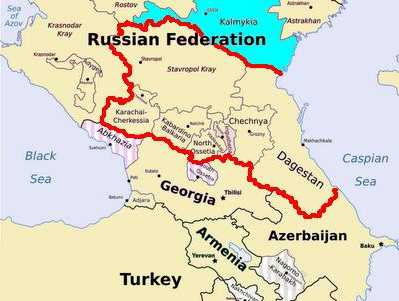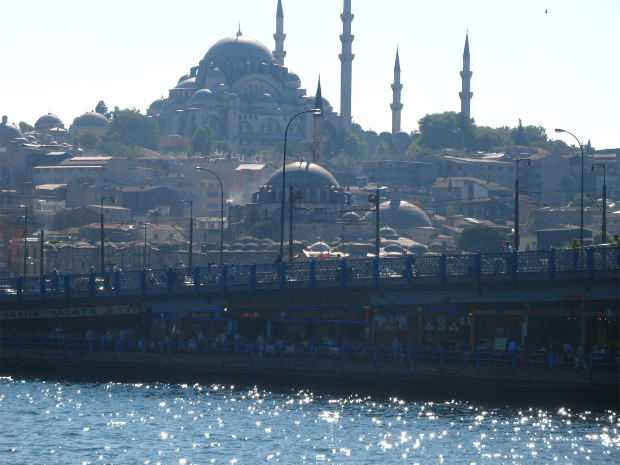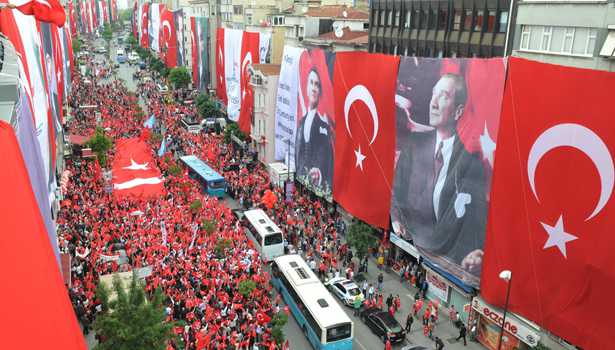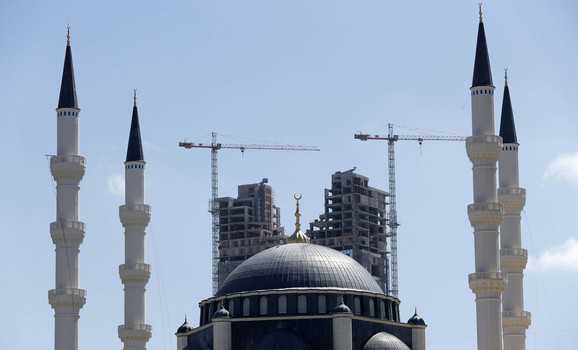Backstage With Seyhan Özdemir and Sefer Çaglar
Creating a New Look for Modern Istanbul
By J.S. MARCUS
July 11, 2008
Wall Street Journal – USA
The young century has been good to Istanbul. Turkey has become a more prosperous place, and its largest city has turned into an international style capital.
The city’s changing fortunes are embodied in the hip young design duo Seyhan Özdemir and Sefer Çaglar, who founded their firm, Autoban, in 2003 (the invented word comes from the Turkish “otoban” and the German “autobahn,” both meaning highway). In the past few years, they have become the face of contemporary Turkish design, with regular appearances in leading interior-design magazines.
Both Istanbul natives, Ms. Özdemir, 33 years old, an architect, and Mr. Çaglar, 34, who studied interior design, met in the 1990s when they were students at Istanbul’s Mimar Sinan Fine Arts University. They are noted for their furniture and lighting designs, and for the interiors of some of Istanbul’s hottest restaurants and retailers. An Autoban design is marked by sleekness, solidity and humor. The Bergere bed, from 2007, has a wood-and-leather headboard that suggests an armchair. A 2003 wooden rocking chair — with continuous arms and legs — has a spaciousness that belies the clean lines of the design.
Ms. Özdemir and Mr. Çaglar have their studio in the shadow of the Galata Tower, the 14th-century landmark just north of the Golden Horn. Built by Genoese traders, the tower was for centuries the center of Istanbul’s enclave of Western diplomats, merchants and adventure-seekers. These days, the Galata Tower is a symbol of the city’s rapid gentrification, and the surrounding area is a blur of old and new, with traditional artisans from Anatolia rubbing shoulders with artists and designers in the district’s narrow, winding streets.
A favorite watering hole near Galata is the House Café, with an Autoban interior of mix-and-match wooden tables and chairs and geometric lamps. Started in 2002 by Ms. Özdemir’s sister, the House Café has 10 locations around Istanbul, each designed by Autoban. The firm also did the interior for the recently opened Müzedechanga restaurant at the Sakip Sabanci Museum, along the Bosporus north of the city. The design has a funky 1960s quality, with stained wood, marble and leather. (See more projects at www.autoban212.com.)
We spoke to Ms. Özdemir and Mr. Çaglar in their new showroom not far from their Galata studio.
Q: Istanbul has changed dramatically in the last few years — from the amount of traffic on the streets to the amount of disposable income of residents. How has this affected what you do?
Ms. Özdemir: Ten years ago, after we had just finished university, there were many economic and political issues, and people weren’t focused on working with designers — they didn’t understand what it meant to put something interesting in their lives. Now people communicate more — there is the Internet, and many other new things. Unlike 10 years ago, you can now buy many international [design] magazines in Istanbul. The world has changed.
Q: Your name combines the German and Turkish words for highway. Why did you choose it?
Ms. Özdemir: For us, it’s a kind of philosophy. When you are riding on a highway, everything changes around you. And you have choices: You can choose this way or that way, where you are going. For us, [design] is all about choice.
Q: For a visitor, Istanbul seems to have two predominant decorative traditions — the Byzantine and the Ottoman. How do these styles influence contemporary Turkish interiors?
Ms. Özdemir: Ten or 20 years ago, Turkish architects and designers made references to Ottoman and Byzantine culture in their designs. They couldn’t do anything new — that’s why we didn’t have Turkish design at that time. We are trying to do [something] new. Of course, we were born here, we are living here, so these old cultures are on our minds; we are inspired by them. But we are trying to do something more international.
Q: You have won attention from the design world outside Turkey, but you have only worked inside the country. Why?
Ms. Özdemir: We have so much to do in Istanbul. The city has so much energy right now — it’s so busy, so attractive. Many foreigners are starting to come here, even live here, so there are many new restaurants and new hotels opening up. We would like to do something abroad, but we don’t have time now. We have around 20 people in our office, and we are working on 20 projects.
Q: Do the archaic traditions of Anatolia inspire your furniture and lighting designs?
Ms. Özdemir: No, never. It’s interesting, though. I like to see those designs, and I would like to have them, but as a designer I don’t want to get inspiration from only one thing. I have many things in my mind; Sefer has as well.
Q: You’re very rooted in the Galata neighborhood, which is undergoing a wave of gentrification. What do you like about working there?
Ms. Özdemir: Galata is the commercial center of old Istanbul; you feel it in the buildings and the streets, in the ambience. But when we moved there five years ago, there were only local manufacturers — as product designers, we wanted to be near production. Back then nobody wanted to live there, nobody wanted to have an office there, it was too messy, too crowded. But then many people started coming — artists, designers, fashion designers. They came because of the buildings — you have wonderful architecture around you — and because it’s central. You have really good energy there. It’s the real Istanbul.
Q: You have designed several interiors for the House Café, which has locations all over the city. How do you maintain a balance between consistency and individuality when designing different versions of the same brand?
Mr. Çaglar: The House Café changes its shape but not its identity. Wherever it goes, it gets new energy from the nearby architecture and from the people in the neighborhood.
Ms. Özdemir: [At all the branches] the dishes are the same, and the furniture is mostly the same. However for each [location], we try to put in one thing that is different and unique.
Q: Many great modernist architects sought refuge in Turkey in the 1930s, and designed interesting buildings. What has been their legacy for Turkish architects?
Ms. Özdemir: After Nisan [Mimar Nisan, the architect of the Blue Mosque, who lived 1489-1588], I don’t think there was another really good architect in Turkish history. Thanks to the [foreign architects] of the 1930s, Turkey’s architects tried to create their own attitude — a “Turkish” style.
In the 1950s everything changed, especially in Istanbul. Many people came to live here from Anatolia. They were so poor, they just needed to have a place to live. The government couldn’t come up with rules for architecture, or urban planning; everyone ended up doing their own thing. After the 1990s, people here in Istanbul, including the government, understood the importance of the city. They knew if we don’t do anything to keep it, we are going to lose Istanbul. So they created new guidelines for architecture, for street life. In the last 10 years, the architectural scene in Istanbul has started changing, growing up.
Mr. Çaglar: Those modern architects who came to Istanbul — like Bruno Taut, who came from Berlin — were our teachers’ teachers.
Q: The megamall has reached Istanbul with a vengeance. You have designed retail interiors for some of the city’s largest malls. What are the special challenges in that kind of environment?
Ms. Özdemir: It is more difficult to do something in a mall than in the city, because in a city you have many things around you. [A mall] is so artificial, and yet you have to create a real life, a real interior, but you don’t really have anything that you can use. There is no context; you have to create it.






